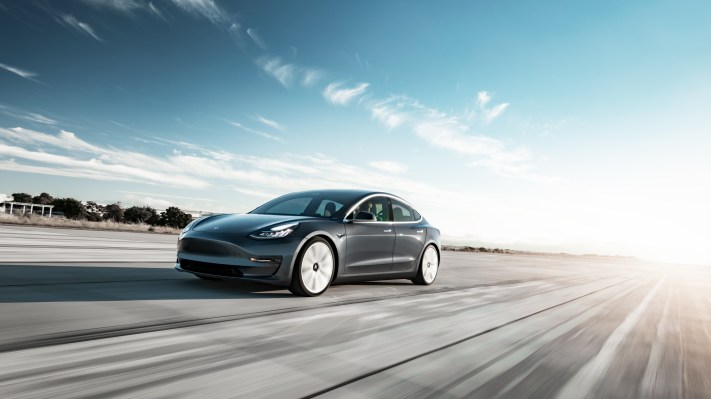Tesla extended its profitability streak to four quarters today, its longest period of profitability to date according to Q2 earnings it disclosed after the market closed.
Tesla hit that profitability mark despite nearly flat quarter-over-quarter revenues — and a 5% drop compared to the same period last year — thanks to a reduction in operating expenses and an increase in regulatory credit revenue. Tesla was also able to recognize deferred revenue of $48 million related to its Full Self Driving (FSD) feature release.
The automaker reported that it earned $104 million in net income, or $0.50 a share, compared with a $408 million loss, or a $2.31 per share loss, in the same period last year. Tesla’s adjusted EBITDA in the second quarter, a heavily shaped profit metric, was $1.21 billion in the quarter, up from $572 million in the year-ago period.
Excluding certain costs, the company’s adjusted net income was $451 million in Q2, worth $2.18 per share.
Analysts had expected a loss of 11 cents per share and revenue of $5.23 billion, according to data compiled by Yahoo Finance. Tesla shares increased around 7% in after-market trading on the news, to $1,698 per share. (Other data sources had higher per-share profit and revenue expectations.)
Tesla reported revenue of $6.04 billion, more than the $5.985 billion generated in the previous period and around $300 million less than the same quarter last year, or about 5%. Tesla generated $6.3 billion in revenue in the second quarter of 2019.
Tesla said revenue benefited from a quarter-over-quarter increase in vehicle deliveries, regulatory credit revenue and sales in its energy generation and storage business. However, those numbers were offset by lower vehicle average selling price and lower services.
It should also be noted that while vehicle deliveries did increase 3% from the first quarter, to 90,891, they were still 5% lower than the same period last year. Tesla pointed to challenging circumstances, such as its temporary factory closure in Fremont, California, caused by the COVID-19 pandemic.
Its automotive gross margins grew to 25.4% in the second quarter, up from 18.9% in the same period last year. Tesla includes regulatory credits in its automotive revenues, which figure into its gross margins.
Regulatory credits in the second quarter were $428 million. Revenue from credits dropped after the first quarter of last year, hovering between $111 million and $134 million, before popping again this year. Tesla reported $354 million in regulatory credits in the first quarter, a 64% increase from the first quarter of 2019.
Tesla reported positive free cash flow of $418 million in the second quarter, up from a negative Q1 2020 result, but down 31% from a year-ago result of positive $614 million. Tesla has previously targeted being free cash-flow positive for 2020. The company didn’t hit that goal in the first quarter of the year, reporting a negative free cash flow of $895 million.
